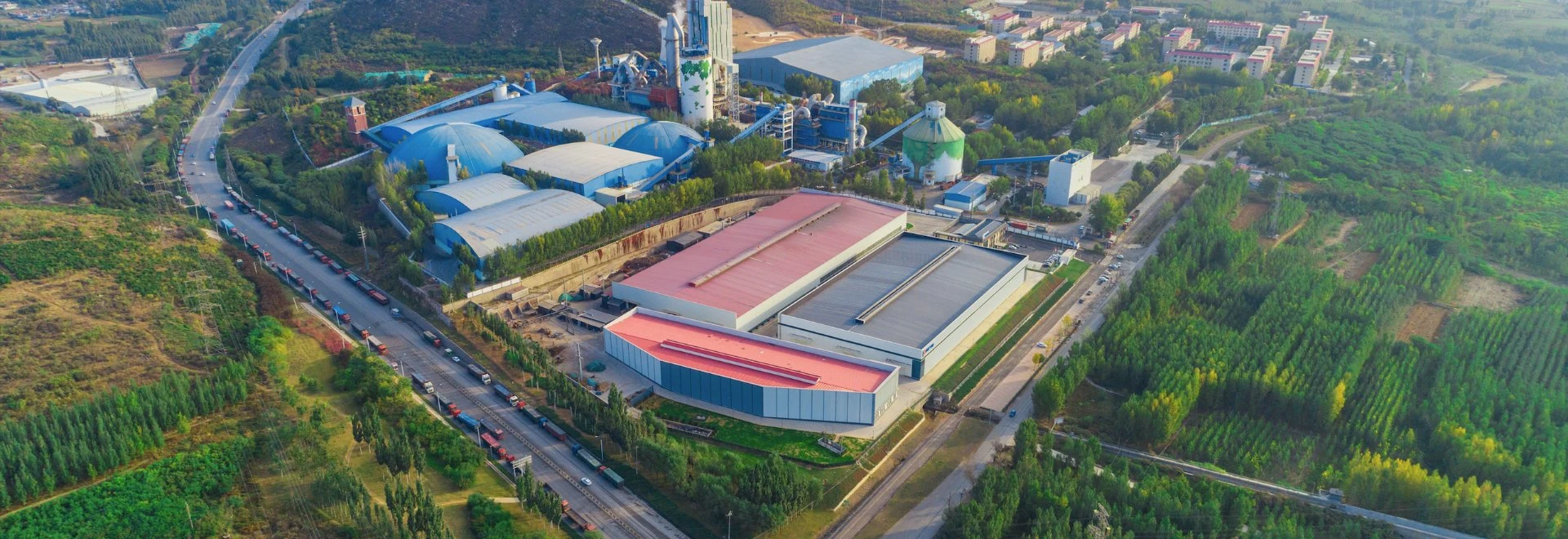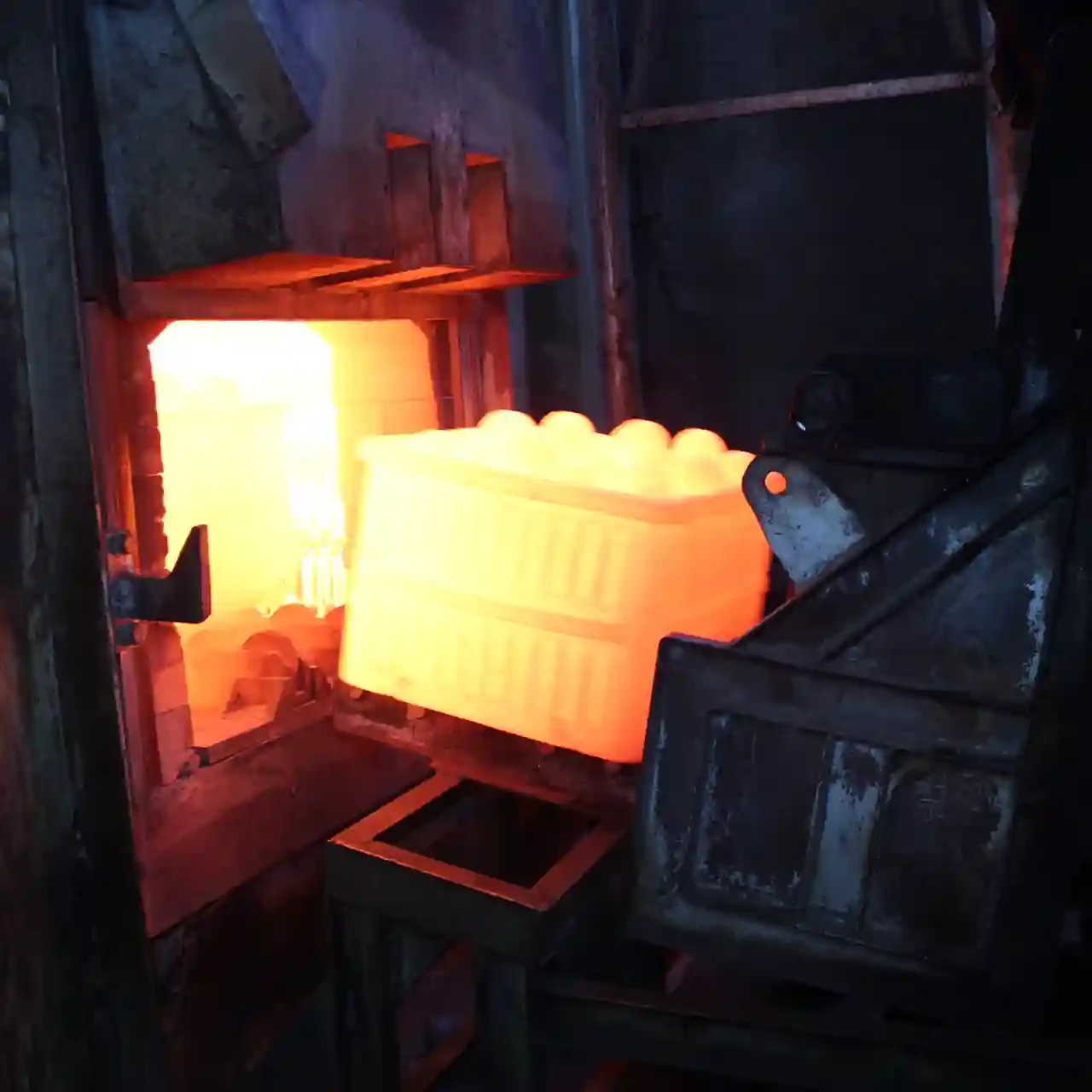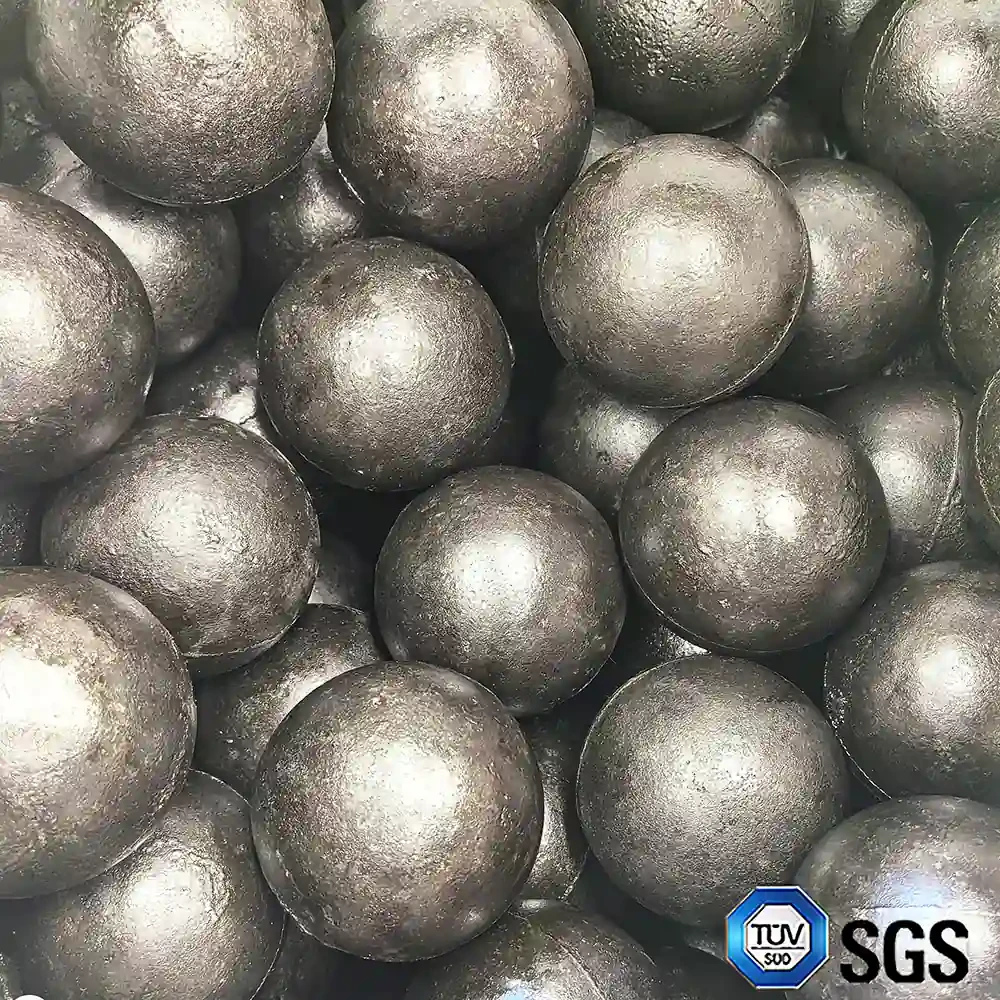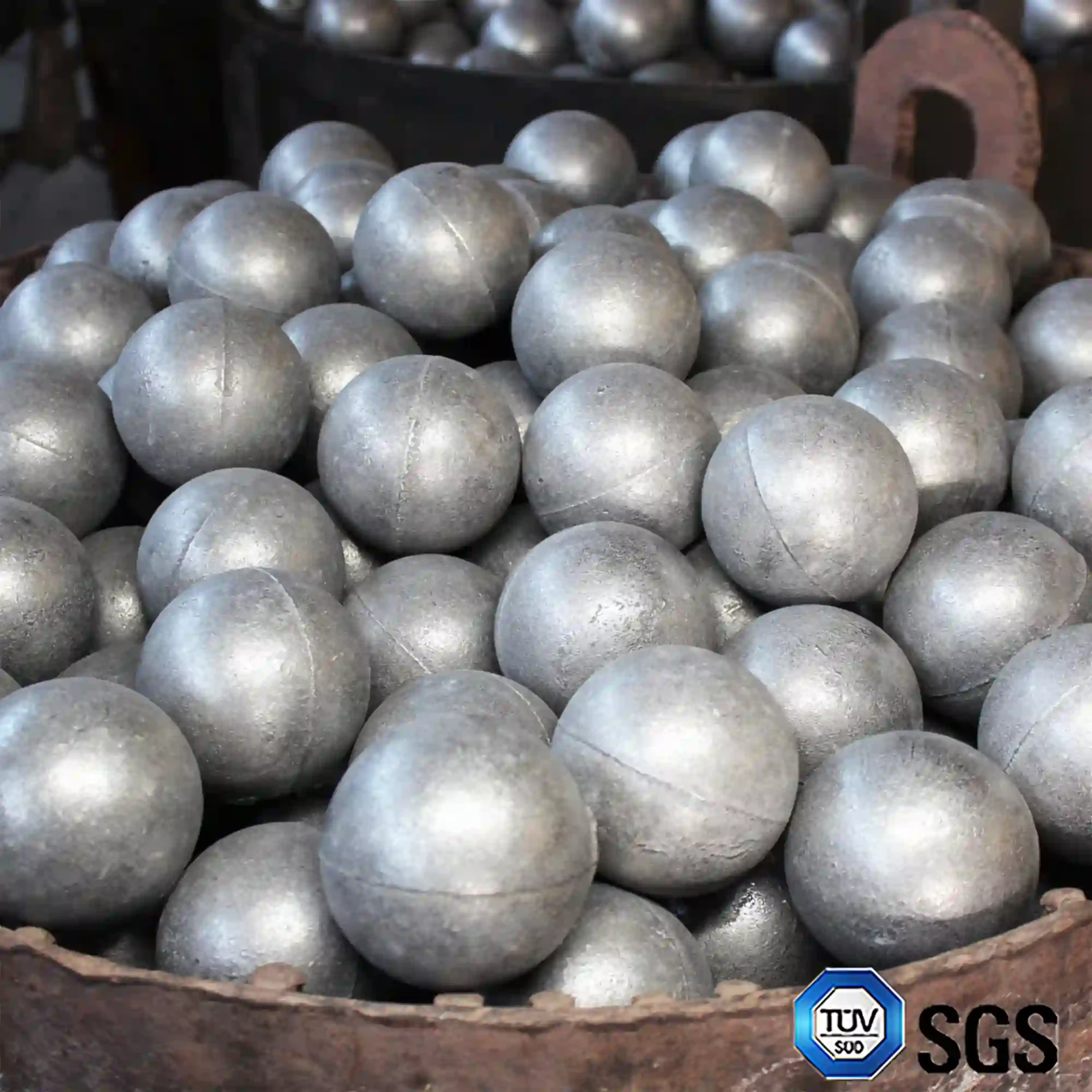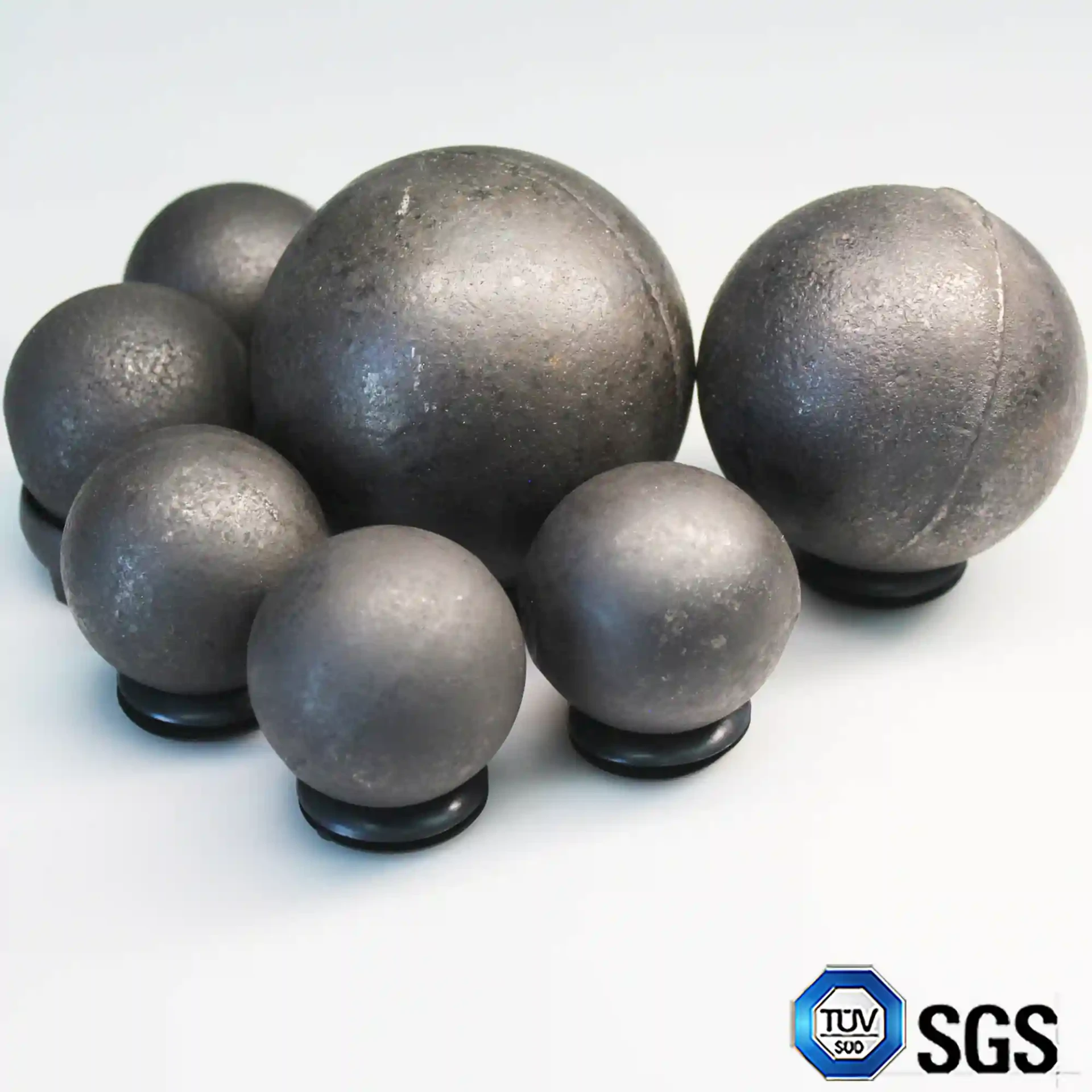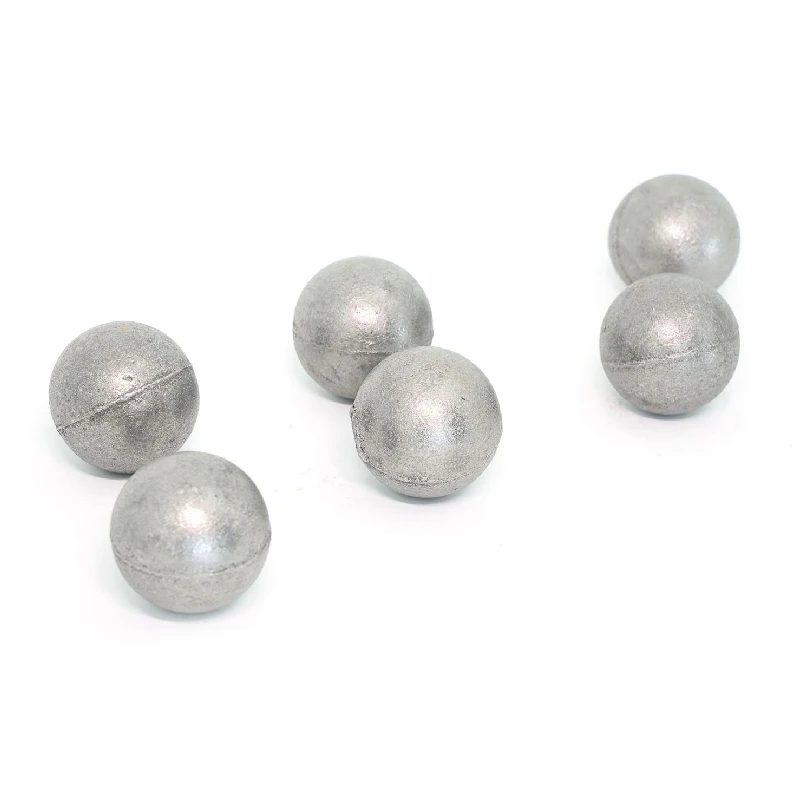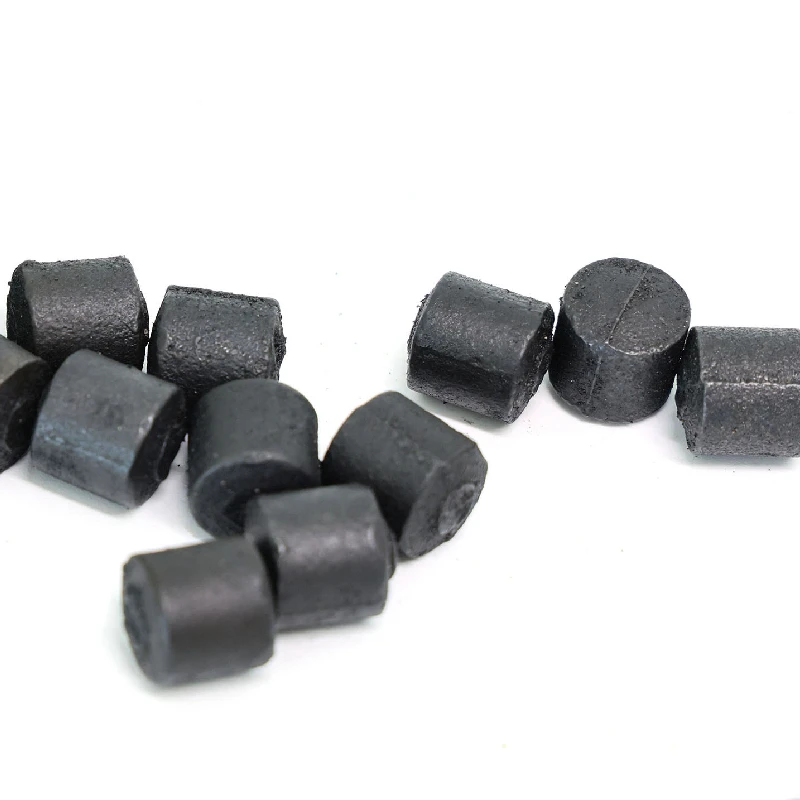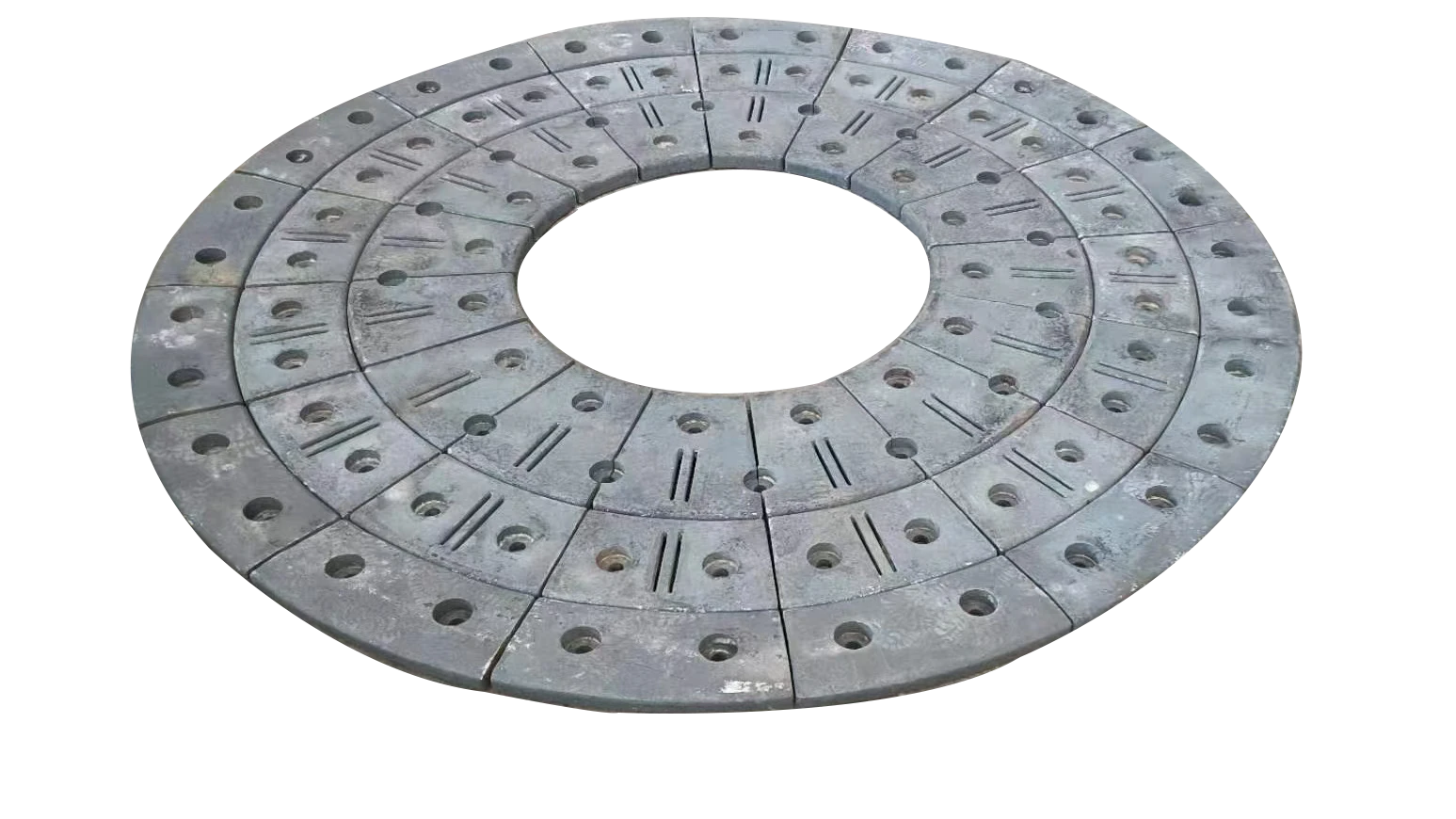Aug . 06, 2025 06:40 Back to list
Durable Milling Balls | Steel Grinding Balls Manufacturer
In the world of industrial grinding, the efficiency, longevity, and performance of the entire operation often come down to one critical component: the milling balls. These unassuming spheres are the powerhouse of ball mills, essential for comminution processes across sectors like mining, cement production, and power generation. This guide provides a comprehensive exploration of milling balls, covering everything from industry trends and technical specifications to manufacturing processes and real-world applications, with a special focus on the superior performance of Super High Chromium Grinding Balls.
Industry Trends: The Shift Towards High-Performance Grinding Media
The global demand for minerals and finely ground materials is constantly increasing. This pressure forces industries to seek more efficient and cost-effective grinding solutions. The current trend in the milling balls market reflects this, with a significant shift away from traditional, low-cost forged steel balls towards advanced, high-performance alloy balls.
Key Market Drivers:
- Energy Efficiency: Grinding is an energy-intensive process, accounting for up to 50% of a mine site's energy consumption. High-performance steel grinding balls maintain their shape and hardness longer, leading to more efficient grinding and significant energy savings. Industry data suggests a potential for 10-20% energy reduction by switching to optimized grinding media.
- Reduced Consumption & Operational Costs: Lower wear rates mean less frequent replacement of the ball charge, reducing media consumption, mill downtime, and labor costs. This directly impacts the overall operational expenditure (OPEX) of a plant.
- Environmental Regulations: Stricter environmental standards push companies to adopt cleaner and more sustainable practices. Efficient grinding reduces the carbon footprint per ton of processed material.
- Material Complexity: As high-grade ore bodies are depleted, industries are processing harder, more abrasive, and more complex ores. This necessitates the use of robust mining balls that can withstand severe impact and abrasion.
This industry evolution highlights the growing importance of partnering with knowledgeable ball mill manufacturers who can provide not just a product, but a comprehensive grinding solution tailored to specific operational needs. The focus is now on Total Cost of Ownership (TCO) rather than just the initial purchase price of the balls.
Deep Dive: Super High Chromium Grinding Balls – The Apex of Performance
At the forefront of this technological shift are Super High Chromium Cast Milling Balls. These are not just standard steel balls; they are a feat of metallurgical engineering designed for the most demanding environments. Our flagship product, the Super High Chromium Grinding Ball, exemplifies the pinnacle of this technology.
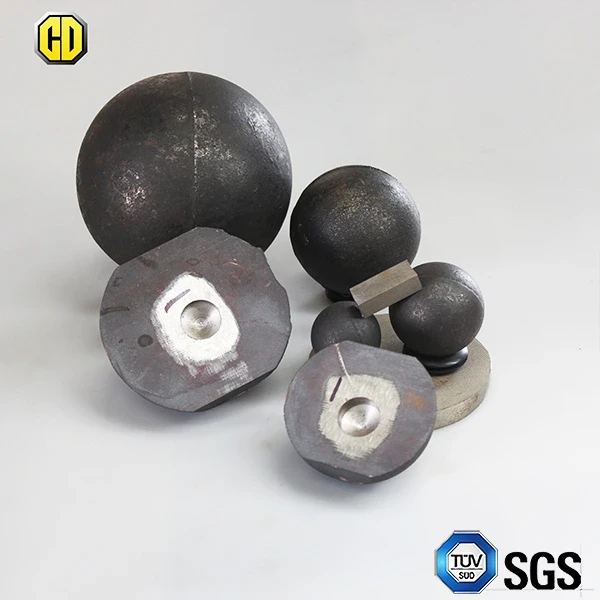
Technical Specifications and Advantages
The superiority of these steel balls for ball mill applications stems from their unique chemical composition and microstructure, achieved through a meticulously controlled manufacturing process. The high chromium content (typically >17%) and carbon form extremely hard chromium carbides (M7C3) within a tough martensitic matrix, a combination that delivers exceptional wear and impact resistance.
Key Technical Parameters: Super High Chromium Grinding Ball
| Parameter | Specification | Significance & Benefit |
|---|---|---|
| Product Name | Super High Chromium Grinding Ball | Indicates premium alloy composition for maximum performance. |
| Diameter Range | Φ20mm – Φ150mm | A wide range of sizes allows for precise customization for various mill types and grinding requirements. |
| Hardness (HRC) | ≥ 60 HRC (Surface & Core) | Extremely high hardness ensures minimal wear and deformation, maintaining grinding efficiency over time. Uniform hardness prevents premature failure. |
| Chromium (Cr) Content | 17% - 28% | The key element for forming hard carbides, providing unparalleled abrasion resistance. Higher content is suited for more abrasive materials. |
| Impact Value (Ak J/cm²) | ≥ 4.5 J/cm² | High impact toughness prevents breakage and spalling, even in large SAG mills with high-impact conditions. This is a critical safety and performance metric. |
| Breakage Rate | ≤ 0.5% | An extremely low breakage rate, verified by drop tests, ensures operational stability and prevents mill damage from broken fragments. |
| Manufacturing Standard | GB/T 17445-2009, ISO 9001 | Adherence to international and national standards guarantees consistent quality, traceability, and reliability. |
Data-Driven Insights: Visualizing the Performance Gap
To truly understand the value proposition, it's essential to visualize the performance differences. Data clearly shows why an investment in high-chromium milling balls yields significant returns compared to traditional options like forged steel.
Performance Comparison: High-Chrome vs. Forged Steel
Super High-Chrome vs Forged SteelTypical Chemical Composition (%)
- Cr: ~22%
- C: ~3%
- Mn: ~1.5%
- Si: ~1%
- Fe: Balance
Wear Rate Over Operating Hours
Comparative Analysis of Grinding Media
Choosing the right grinding media is a critical decision that impacts a plant's productivity and profitability. The table below offers a general comparison between different types of commonly used milling balls.
Grinding Ball Type Comparison
| Property | Super High-Chrome Cast Ball | Low-Chrome Cast Ball | Forged Steel Ball | Ceramic Ball (Alumina) |
|---|---|---|---|---|
| Hardness (HRC) | 60-67 | 45-55 | 55-63 | >75 (Mohs scale 9) |
| Wear Resistance | Excellent | Moderate | Good | Excellent (corrosion) |
| Impact Toughness | Very Good | Good | Excellent | Low |
| Breakage Rate | Very Low (<0.5%) | Low | Low | High (on impact) |
| Primary Application | Abrasive ores, cement, SAG mills | Cement, power plants | General mining, less abrasive materials | Ultrafine grinding, non-ferrous, sand milling |
| Cost per Ton | High | Medium | Low-Medium | Very High |
The Science of Strength: Our Manufacturing Process Explained
The exceptional quality of our milling balls is not an accident; it's the result of a rigorous, scientifically-driven manufacturing process. Each step is precisely controlled and monitored to meet stringent quality standards like ISO 9001. This transparency in our process demonstrates our expertise and commitment to delivering a trustworthy product.
1. Raw Material Inspection
Scrap steel and ferroalloys are spectrally analyzed to ensure they meet the exact chemical composition required for the target chromium and carbon content.
2. Electric Furnace Smelting
Materials are melted in an intermediate frequency electric furnace, allowing for precise temperature control and adjustment of the chemical composition.
3. Metal Mold Casting
The molten metal is poured into metal molds on an automated production line. This ensures rapid cooling, resulting in a finer grain structure and higher density.
4. Heat Treatment
This is the most critical step. Balls undergo a scientific quenching and tempering process to form the desired martensitic matrix, optimizing hardness and toughness.
5. Quality Inspection
Rigorous testing includes hardness tests (HRC), impact tests (Ak), drop tests, and metallographic analysis to ensure every batch meets our promise of quality.
Applications & Advantages Across Industries
The robust nature of Super High Chromium steel grinding balls makes them the ideal choice for a wide range of heavy-duty applications. Their primary advantage lies in significantly reducing the cost-per-ton of ground material through superior performance.
Mining Industry
Used as mining balls in SAG and ball mills for grinding hard and abrasive ores like gold, copper, iron, and platinum. Their high impact toughness and wear resistance are critical in these high-stress environments, leading to increased throughput and lower media consumption.
Cement Plants
In cement clinker grinding, maintaining consistent fineness is key to cement quality. Our steel balls for ball mill applications ensure stable grinding performance, reducing energy consumption per ton of cement and minimizing contamination from media wear.
Thermal Power Stations
Used for coal pulverization. Efficient grinding ensures complete combustion, improving boiler efficiency and reducing emissions. The low wear rate of our balls means less downtime for the coal mills.
Other Applications
Also used in chemical engineering, quartz sand production (a form of sand milling), and other industries requiring fine grinding of hard materials where contamination and wear are major concerns.
Choosing Your Partner: What to Look for in Ball Mill Manufacturers
Selecting a supplier for your grinding media is a long-term strategic decision. A reliable partner offers more than just milling balls; they provide expertise, support, and a commitment to your operational success. As leading ball mill manufacturers and media suppliers, we believe the following criteria are essential:
- Proven Expertise & Authority: Look for manufacturers with a deep understanding of metallurgy and grinding dynamics. Certifications like ISO 9001, published research, and a long history in the industry are strong indicators of authority. We have over 20 years of experience in the field.
- Rigorous Quality Control: The supplier must demonstrate a comprehensive QC process, from raw material to final product testing. Ask for test reports, material certificates, and details on their inspection standards (e.g., ANSI, GB/T).
- Customization Capability: Every grinding circuit is unique. A top-tier manufacturer will work with you to analyze your ore characteristics, mill parameters, and operational goals to recommend or develop a custom grinding media solution.
- Transparent Communication & Support: From initial inquiry to after-sales support, the manufacturer should be a responsive and reliable partner. This includes clear information on delivery cycles, quality guarantees, and technical assistance.
- Verifiable Experience: Ask for case studies, client testimonials, and references within your industry. Real-world performance data is the ultimate proof of a product's value.
From Theory to Reality: Custom Solutions & Case Studies
Tailored for Your Mill: Our Customization Process
We don't believe in a one-size-fits-all approach. Our process begins with a thorough consultation to understand your specific needs. This involves analyzing:
1. **Mill Type & Size:** (SAG, Ball, Rod Mill dimensions)
2. **Material Properties:** (Hardness, abrasiveness, feed size)
3. **Operational Goals:** (Target particle size, throughput increase, cost reduction)
Based on this data, we recommend the optimal ball size, alloy composition (chromium content), and ball charge to maximize your grinding efficiency.
Case Study: Apex Copper Mine Increases Throughput by 12%
Challenge: Apex Copper Mine in South America was struggling with high consumption of forged steel grinding balls and frequent mill downtime for recharging. The highly abrasive nature of their copper ore led to rapid ball wear and inconsistent product fineness.
Solution: Our technical team collaborated with the mine's metallurgists. After analyzing their circuit, we recommended a switch to our Φ120mm Super High Chromium (22% Cr) milling balls. We also suggested an optimized initial ball charge gradation.
Results (after 6 months):
- Grinding Media Consumption: Reduced by 45%.
- Mill Throughput: Increased by 12% due to sustained grinding efficiency.
- Energy Consumption: Decreased by 8% per ton of ore processed.
- Downtime: Reduced significantly, leading to higher overall plant availability.
Conclusion: While the initial investment in high-chromium balls was higher, the total cost of ownership (TCO) plummeted. Apex Copper Mine achieved a full return on their investment within 9 months and now enjoys a more stable, productive, and profitable grinding operation.
"Since switching to Chengda's Super High Chromium balls, our grinding circuit has never been more stable. The wear life is incredible, and the support from their technical team was instrumental in optimizing our process. It's a true partnership."
Your Questions Answered: Professional FAQ on Milling Balls
To enhance trust and demonstrate our expertise, we've compiled answers to some of the most common technical questions about milling balls.
HRC stands for Rockwell Hardness Scale C. It's a standard method for measuring the indentation hardness of metals. For milling balls, high HRC hardness (ideally >60) is vital because it directly correlates to abrasion resistance. A harder ball will wear down more slowly, maintaining its spherical shape and mass for longer. This ensures consistent and efficient grinding performance, as misshapen or undersized balls are less effective at breaking down material. Uniform hardness from the surface to the core is also critical to prevent balls from flattening or breaking prematurely.
Chromium (Cr) is the single most important alloying element in high-performance steel grinding balls. When combined with carbon in the right proportions and subjected to proper heat treatment, chromium forms extremely hard micro-particles called chromium carbides (M7C3) within the steel's microstructure. These carbides are significantly harder than the surrounding steel matrix. The higher the chromium content (up to a certain point), the more of these wear-resistant carbides are formed. This is why "Super High Chromium" balls (17-28% Cr) drastically outperform low-chrome (1-3% Cr) or forged steel balls (typically
The primary difference lies in the manufacturing method, which dictates their properties.
Forged Steel Balls: Made by heating a steel bar and forming it into a sphere. This process gives them excellent impact toughness, making them resistant to breaking. However, their alloy content is typically low, resulting in lower abrasion resistance compared to high-chrome cast balls.
Cast Steel Balls: Made by melting steel with specific alloys (like high chromium) and pouring it into a spherical mold. This allows for complex and highly effective alloy compositions that are impossible to forge. High-chrome cast milling balls offer superior hardness and abrasion resistance but require careful heat treatment to ensure adequate impact toughness. For most modern, abrasive applications, the wear life advantage of high-chrome cast balls far outweighs the slight toughness advantage of forged balls.
Choosing the correct ball size is critical for grinding efficiency and is based on a formula known as the Bond or Davis formula, which considers several factors. The most important are:
1. **Feed Material Size (F80):** The larger and harder the incoming rocks, the larger the top-size ball required to effectively break them.
2. **Mill Diameter:** Larger diameter mills impart more energy and can effectively use larger balls.
3. **Target Product Size (P80):** If you need a very fine product, a charge with a greater proportion of smaller balls is often more efficient for the final grinding stages.
As a general rule, you need balls large enough to break the largest feed particles but not so large that you waste energy and reduce grinding surface area. We offer free consultations to help you determine the optimal ball size distribution for your specific circuit.
Reputable manufacturers of mining balls adhere to stringent quality control standards. Key inspection points include:
• Chemical Composition Analysis: Using a spectrometer to verify the percentages of Cr, C, Mn, Si, etc., in every heat.
• Hardness Testing (HRC): Checked on the surface and in the core to ensure uniform hardness.
• Impact Testing: Using a Charpy or Izod test machine to measure the impact value (Ak J/cm²), ensuring the balls won't break in the mill.
• Drop Test: A practical test where balls are dropped from a specified height multiple times to check for breakage.
• Metallographic Analysis: Microscopic examination to verify the desired microstructure (e.g., fine martensite + uniformly distributed carbides).
These tests are often governed by standards like the Chinese GB/T 17445-2009 or an equivalent international or company-specific standard based on ISO 9001 principles.
Absolutely. Customization is one of our core strengths and a key differentiator for leading ball mill manufacturers. We understand that variables like ore type, mill liner profile, and operational goals can drastically change the optimal grinding media requirements. Our customization process involves working directly with your technical team to design a ball with the ideal chemical composition (e.g., adjusting Cr content from 17% to 26% for ultra-abrasive ores), hardness profile, and size distribution to deliver the lowest possible cost-per-ton ground for your specific operation.
The lifespan, or wear rate, of milling balls is highly variable and depends on the abrasiveness of the material being ground, mill operating parameters, and ball quality. However, as a general benchmark, Super High Chromium Grinding Balls can have a lifespan that is 2 to 4 times longer than that of standard forged steel balls under the same conditions. In many real-world applications, especially in hard rock mining and cement production, we have documented consumption reductions of over 50%. This extended lifespan is the primary driver for the significant reduction in total cost of ownership.
Trustworthiness & Authority: Our Commitments and Further Reading
Our credibility is built on transparency, quality, and adherence to industry best practices. We are an ISO 9001 certified company, and our products meet or exceed the highest international standards. We offer comprehensive quality assurance on every batch, transparent delivery schedules, and dedicated customer support to ensure your complete satisfaction.
References & Further Reading
- Radziszewski, P. (2002). "Exploring total media wear." Minerals Engineering, 15(11), 1073-1087. This academic paper provides an in-depth analysis of the factors affecting wear in grinding media, supporting the principles of using advanced alloys. [View on ScienceDirect]
- "Grinding Media: A Critical Choice for Comminution Circuits" - An industry overview available on platforms like Mining.com or International Mining. These articles often discuss the economic trade-offs between different media types, reinforcing the value of TCO analysis. [Read Related Industry Commentary]
- GB/T 17445-2009: The national standard in China for cast grinding balls, which outlines the technical requirements, testing methods, and inspection rules for various types of cast balls, including high chromium alloys. This is a foundational document for quality assurance in the industry.
-
Expert Insights on Fabrica de Molinos de Bolas: Industry Trends & Global Applications
NewsNov.24,2025
-
Expert Insights on Fabricantes de Bolas de Molienda de Acero: Global Applications & Trends
NewsNov.23,2025
-
Leading Fabricantes de Bolas de Molienda: Your Ultimate Guide to Grinding Balls
NewsNov.23,2025
-
Fabricante de Bolas de Molienda – Quality Grinding Balls for Efficient Industry
NewsNov.23,2025
-
Trusted Proveedores de Medios de Molienda for Efficient Industrial Grinding
NewsNov.22,2025
-
Proveedores de Bolas de Molienda: Your Guide to Top Grinding Ball Suppliers & Industry Insights
NewsNov.22,2025
Realted Products

